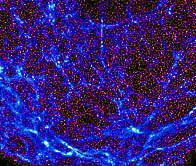Why your dog needs Kangaroo Protein for nutritional health
 In this article I am providing you with information about the protein (amino acid) profile of kangaroo meat and its use in dog food.
In this article I am providing you with information about the protein (amino acid) profile of kangaroo meat and its use in dog food.
If you are one of the 95%+ of people who feed their dogs a manufactured food diet, you are also most likely feeding your dog 20% of its diet from meat. The domestic dog evolved from wolves only 20,000 years ago and its digestion system is still geared towards being a carnivore.
While manufactured dog foods are required to reach AAFCO minimum standards you will find that the only way to achieve these standards for protein minimum requirements is with the inclusion of meat.
While dogs can eat three main types of food ingredient: protein, fats and carbohydrates, they only really need the first two. You will find many books espousing the benefits of feeding dogs a grain free diet, however very few actually give you an objective reason why.
This article, for the first time in the world I believe, provides you with an objective scientific comparison of the various meats you can feed your dog and why kangaroo meat is superior to most in regards to its protein (amino acid) profile.
Other articles on this site will explore the many reason of why kangaroo meat is a superior health product for domestic dogs. This article will concentrate on the comparison of kangaroo meat with chicken, pork, beef, buffalo and salmon.
There are obvious purity, ‘organic’ and hypo-allergenic reasons to feed your dog kangaroo meat, however you probably realise that feeding them raw kangaroo meat is incredibly expensive and difficult to find. This is where feeding your dog kangaroo dog treats from a trusted source provides incredible value.
Be aware that meat protein sources in dog food can contain varying amounts of offal and bone (which provide calcium and phosphorus), but not necessarily quality protein, such as from kangaroo.
A quick explanation of proteins
Proteins are made up of amino acids. Amino acids are short units of carbon, oxygen and hydrogen molecules that when clustered together make up specific proteins in animal and vegetable bodies.
“Geriatric dogs actually benefit from slightly higher levels of high quality proteins” (kangaroo meat) increased dietary protein and this can help to ameliorate the age associated loss of muscle mass.” ref 1p102 The minimum protein requirement of puppies is also much higher than adult dogs. This is because protein is essential for many vital maintenance functions within the dogs body as well as building new tissue and muscle.
Can you feed your dog too much protein?
Considering that most dog foods provide the bare minimum AAFCO protein requirement, and most of the protein is from plants (not animals as originally eaten), providing more quality meat protein should be mandatory for a health concerned owner.
Dogs can gain energy from protein, fats or carbs, however they are more likely to become fat from eating too many carbs (grains) in pet foods. This is because they are artificially made far more tasty than natural (increased palatability by adding fats and sugar to pellets), than is natural to entice your dog to eat in excess of their requirements.
When protein in excess (of dogs protein needs) is consumed, .. two possible things can happen. “If the dog is in a negative energy balance, the excess protein will be used as an energy source. If the animal is in zero or positive energy balance, the excess protein will be deposited as fat and the nitrogen will be excreted in the urine. Unlike fat and carbohydrates, excess amino acids are not stored by the body for future use.” ref 1
HOW is kangaroo meat protein profile different
This is a very difficult question to answer, considering that very few studies in the world have been performed on kangaroo meat.
Suffice to say, apart from the purity (low toxins like farmed animals can have) and great fats, the protein strings are also unique and highly bio available.
The only real objective comparison that can be made to other meats and vegetables/ grains is comparison of the respective amino acid profiles of each protein source. This will be discussed in detail in the next article.


